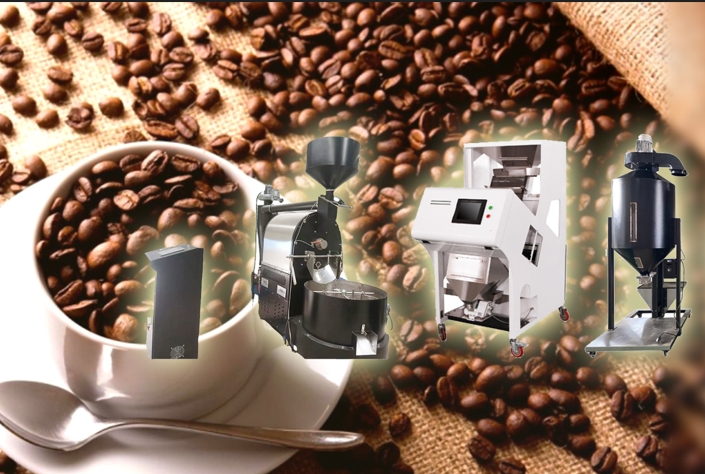Conducting a safety check before using a coffee grinder is an important step to ensure the normal operation of the equipment, avoid potential safety hazards and safeguard the safety of the operators. The following are the key items that need to be checked before use:
First, inspection of appearance and structure
Shell integrity
Check the machine body for cracks, deformations or damages to prevent the internal components from being exposed or leaking electricity.
Example: If there are cracks in the casing, it may cause the coffee powder splashed during the grinding process to enter the motor and cause a short circuit.
The tightness of the connecting components
Ensure that all screws, nuts and fasteners (such as the bean hopper, powder outlet and base) are not loose to prevent vibration or detachment during the operation of the equipment.
Analogy: Similar to a loose handlebar on a bicycle, it may lead to loss of control during operation.
Power cord and plug
Check whether the power cord is damaged, aged or exposed, and whether the plug is intact and undeformed.
Key point: If the insulation layer is found to be damaged, the power cord should be replaced immediately to avoid the risk of electric shock.
Second, electrical system inspection
Grounding protection
Confirm whether the equipment is equipped with an effective grounding wire (such as a three-pronged plug) to prevent the casing from becoming electrified in case of leakage.
The grinding machine with a metal casing is not grounded. Once there is a leakage of electricity, the operator may get an electric shock when touching it.
Switches and buttons
Test whether the power switch and the start/stop button are sensitive, without any lag or poor contact.
Operation: Press the switch repeatedly to confirm there is no delay or adhesion.
Leakage protection device (if any)
Check whether the equipment is equipped with a leakage protection device and test whether its function is normal.
TEST method: Press the “Test” button to confirm that the device is powered off. After resetting, restore power supply.
Third, inspection of mechanical components
Blade/grinding disc condition
Check whether the blade or grinding disc is sharp, free of notches, cracks or severe wear.
Risk: Passivated blades may lead to reduced grinding efficiency and even cause fires due to overheating.
Bearings and transmission components
Manually rotate the blade/grinding disc to ensure smooth rotation without any abnormal noise or jamming.
Abnormal situation: If it is difficult to rotate, it may be due to insufficient oil in the bearing or foreign objects inside.
Bean silo and flour outlet
Make sure the bean barn is not clogged and there are no foreign objects or coffee grounds remaining at the flour outlet.
Cleaning: Use a soft-bristled brush to remove residues to prevent clogging and affect the grinding effect.
Fourth, inspection of safety protection devices
Protective cover/cover plate
Confirm whether the protective cover of the blade or grinding disc part is installed properly, without any missing or loose parts.
Risk: The absence of the protective cover may cause the operator to accidentally come into contact with the rotating parts, resulting in cuts.
Emergency stop button (if any)
Test whether the emergency stop button functions properly. After pressing it, the equipment should stop running immediately.
In an emergency (such as when the blade gets stuck), the emergency stop button can quickly cut off the power supply.
Fifth, environmental and operational preparations
Cleaning of the working area
Ensure that the operation surface is dry, free of water stains or oil stains, and prevent the equipment from sliding or leaking electricity.
Risk: A damp environment may increase the risk of electric shock.
Ventilation conditions
Ensure good ventilation in the operation area to prevent the accumulation of coffee dust generated during the grinding process.
Hazard: Dust accumulation may cause explosions (especially in commercial equipment).
Personal protective equipment
Operators should wear protective glasses and masks to prevent coffee powder from splashing or being inhaled.
Analogy: Similar to wearing goggles when working as a carpenter to prevent wood shavings from splashing.
Sixth, special inspection before first use
No-load operation test
Without adding coffee beans, start the device and run it for 1 to 2 minutes to observe if there is any abnormal vibration, noise or odor.
Key point: If there is a burnt smell, it might be due to motor overload or internal short circuit.
Grinding degree calibration
According to the equipment manual, adjust the grinding degree to the initial set value to ensure that the grinding effect meets expectations.
For espresso, the extremely fine grinding degree needs to be adjusted.
Seventh, daily maintenance suggestions
Regular cleaning
After each use, clean the coffee bin, flour outlet and blades to prevent coffee grounds from remaining and causing bacterial growth.
Method: Use a dedicated cleaning brush or vacuum cleaner.
Lubrication and maintenance
Regularly add food-grade lubricating oil to the bearings and transmission components to extend the service life of the equipment.
Frequency: It is recommended to do it every 3 to 6 months.
Storage environment
The equipment should be stored in a dry and well-ventilated place, avoiding direct sunlight or damp environments.
Risk: A humid environment may cause rust inside the motor.
Through the above comprehensive safety inspection, the safety risks during the use of coffee grinders can be effectively reduced, ensuring the efficient and stable operation of the equipment.


